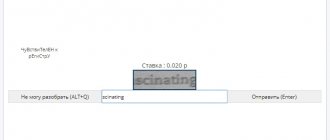Creation of a charitable foundation
Before opening a fund, you need to choose a direction of activity. Funds can help have different specializations; among all others, you need to choose one: you cannot first provide assistance in the reconstruction of a historical building, then help orphans or the homeless.
Financial reporting is an important component of the work of a charitable foundation. It is controlled by the state. To get started, you need to enlist the financial help of patrons, grantmakers, and other donors. They will form the budget of the organization: without this, the fund will not be able to exist.
Once the direction of assistance has been chosen and partners have been found, you can start thinking about practice. Start with the name of the fund - it must correspond to the essence of the activity.
Next steps:
- development and registration of statutory obligations;
- personnel selection;
- creating your own website;
- marketing;
- search for volunteers.
Vigilant old lady
There are more than 18.5 thousand charitable foundations in Russia.
This does not include autonomous non-profit organizations, which include charity in their charter. Do you know who collects the most? Sick orphan infants. In second place are adolescents with complex illnesses. Then there are dogs and elderly people. But for adults who find themselves in a deadly situation, there is almost no chance of collecting a million dollars for treatment. The editors of Uryupinskaya Pravda received a letter from an old woman.
— Dear editors! - she writes. — Every month I save 100 rubles from my pension to help sick children. In all our stores there are transparent boxes near the cash register. That's where I put my money. Please explain where this money goes and who I personally helped.
The editors thought about it. But it’s true that transparent boxes with gilded locks appeared quite recently, but at the same time in all significant retail outlets of Uryupinsk. One box is from Voronezh, the second is from free Crimea. The third box is a local mother raising money for an operation for her deaf son.
Opening and registration of a fund to raise money
First of all, a charitable foundation must be registered. Basically, a public organization, foundation or institution is used as a form of registration. The founders of the fund can be either ordinary citizens (individuals) or organizations (legal entities).
Package of documents for registering a charitable foundation:
- Founder's application in form P11001.
- Receipt for payment of state duty (it is 4,000 rubles).
- Constituent documentation.
- Decision on creating a fund.
- Information about the founders.
- A document with the address assigned to the fund.
A charitable foundation is usually a non-profit organization, so information about its registration must be submitted to the Ministry of Justice, and not to the tax office. It is Justice that oversees the work of non-profit institutions.
However, the foundation can also engage in entrepreneurship on the basis of the charter of a commercial organization and permission from the Federal Law “On Charitable Activities”. You can create an OJSC or LLC. But the possibilities for generating income are still limited - 80% of the income will be transferred to financial assistance to those in need. The decision to register a commercial charitable foundation is made by the tax office.
The legislation insists on the creation of two bodies in a charitable organization: executive and collegial, and the charter must clearly delimit their responsibilities.
The distribution of donations in the fund's account is carried out by the board of trustees. It consists of permanent philanthropic partners, founders and other people interested in the work of the foundation. You can often see the names of famous actors, singers, and show business figures on boards of trustees.
The most generous "wills"
Forbes magazine named the most generous philanthropists in the United States in 2007, who made the largest charitable donations.
In first place is inventor and famous philanthropist James Sorenson,
who bequeathed $4.5 billion to his charitable foundation. Possessing the size of his capital, according to Forbes, he died in January of this year at the age of 86. He gave almost all of his fortune to charitable purposes, and not to his heirs - his wife and eight children. The funds will be used primarily to support children's, educational and medical programs.
Peter Peterson, who is in 605th position on the Forbes list of billionaires.
, also the founder of his own charitable foundation. The main expenditure item of the Peterson Foundation is research in the field of economics and, in particular, dissemination of information among Americans about the problem of uncontrollable US foreign debt.
The third largest charitable donation was a bequest from shoe magnate Harold Elfond.
who was born into a family of immigrants from Russia. He committed $360 million to his foundation so that every Maine resident born on or after January 1, 2009, could receive a college grant. During his lifetime, Elfond did not appear on the list of the richest people on the planet, with a capital of over $1 billion.
The material was prepared based on information from RIA Novosti
How a successful charity works
The fund will provide real help only if it employs professional employees.
Charitable Foundation staff:
- Director. His responsibilities are to develop the strategy and mission of the enterprise. The director is also responsible for budget formation and controls the activities of the fund as a whole.
- Project Manager. This person must look for philanthropists and sponsors. He also develops the concepts of this or that charitable event, negotiates its implementation, and implements everything. The project manager is responsible for estimates, selection of contractors and props.
- Chief Accountant. Expense reports, accounting for collected money, monitoring the targeted distribution of funds are his responsibilities.
- Social worker. Obliged to accept applications for assistance and verify their accuracy.
- Marketer. Invents and distributes advertising about the work of the fund, checks the performance of activities, and cooperates with contractors.
- Lawyer. Valuable employee for a charitable foundation. Draws up and checks all documents on the collection and investment of funds from the fund.
Accountants, copywriters, website administrators, and lawyers can work for the fund on an outsourcing basis. When starting an organization, you can officially include only a few specialists on the staff, the rest can be hired under a contract, and over time, a stable team can be formed.
To make the fund’s work successful, it is necessary to invite as many sponsors as possible to cooperate. You should look for them first of all among your friends. Think about who might be interested in your initiative.
The format of assistance to the fund can be not only monetary - it can be materials, things, furniture, vouchers, etc. This could be volunteer help - personal participation in work.
The charitable foundation must also be promoted through a marketing campaign. First of all, you need to create a website for the organization. The more people know about you, the easier it is to find information about the fund, the more funds you can receive. In order to make a website, you don’t have to pay a specialist. You can create it yourself using the designer.
Be sure to register on social networks. A huge number of people will know about you and your work, and there may also be sponsors among them.
Prepare a short but detailed appeal on leaflets indicating the direction of your activity and your contacts. Leave them at the reception at sports schools, cinemas, institutions of further education, etc.
The main thing when looking for like-minded people is to be honest: in conversation, in video messages, in the media. Sincere interest and desire to help will resonate in the hearts of your interlocutors.
All funds received into the fund’s account must be spent in two directions - providing assistance for which it was created (80%) and own needs: salaries to employees, renovation of premises, etc. (20%).
Car for donation
Photos of real sick children are worth their weight in crisp banknotes. Babies with a medical history are easily stolen on the Internet and exposed to fraudulent fund websites - so-called “mirror sites”. This is the opinion of Rusfond’s special correspondent, Svetlana Mashistova, a well-known fighter against scammers and “toxic fees” from St. Petersburg in Russia.
Babies with medical history are stolen on the Internet and exposed to fraudulent foundation sites
— What are smart scammers doing in this area? They give a mother of many children 10 thousand rubles a month. She is happy and gives out thank you interviews. And they are collecting millions for her child. And transparent boxes are black cash. And credit card accounts, which are supposedly easier to transfer money to. It’s easier, but from the moment the money arrived there, it simply floated away. And you can't prove anything! Only a transfer to the account of a charitable organization can be a guarantee. And that's not always the case.
— How many “plastic philanthropists” are in the dock?
“I know of only one case in the entire history of training camps, and even then they gave me a “conditional” sentence. A mother of many children was caught using a fake medical history. And only because a large amount was transferred, the remainder of the fees for the already deceased child - 500 thousand rubles. That's why the police became interested. Do you know who the “waiters” were? These are women waiting for their future husbands from places not so distant. Absentee students, in a word. So such a family conceived a child, and he has a genetic disease in which the child will not last more than a year. Dad is a fraud there. And they began to collect for childbirth in Germany. The child will supposedly be saved there. How much did you collect? It is unknown, they said 300 thousand, but did not go to any Germany. The child died in Russia. So how can we help such families? Our man does not trust the police, the administration, or officials. And it’s easy for swindlers who collect money for sick children!
I also learned about the biggest funds raised for charity. 2.5 million euros are collected for the latest medicines for genetically ill children in Russia. This is a lot of money, and it is slowly being collected. But there are other examples. In Nizhny Tagil, in 2020, the entire city collected 19 million rubles for the treatment of a child in America. Reports on spending overseas were published on social networks. And then some vigilant citizen took a closer look at the bills. Red fish, beer, a new car, renting an apartment in a prestigious area and other excesses. There was a big scandal. Needless to say, the family never returned to Russia. By the way, a Uryupinsk mother, who was saving for an operation for her deaf son, pulled out 1.5 million rubles from plastic boxes and at the same time straightened out passports for the whole family. The boy has been suffering for 1.5 years. During this time, he was promised free operations in St. Petersburg, Moscow, and Volgograd. Time is running. Money is dripping.
Ways to make money from a charity foundation
Methods of earning money from the fund are divided into honest and gray schemes. All donations to the fund can be targeted or non-targeted. Of the non-targeted fees, the fund can legally take 20% to pay for its own needs. The foundation can also organize some kind of activity from which you can make money - for example, sewing toys for children. The difference between the cost and the sale price is the fund's earnings, part of which the fund can also take back. Sometimes charitable foundations resort to “gray” schemes, indicating incorrect figures in official reports and receiving the difference in an envelope as a “kickback”.
Participation in social projects helps the foundation earn money. The easiest way to attract more people to charity and get a direct economic effect are social actions, which also increase the percentage of profitability. For example, a chain of toy stores can hold a campaign to help orphanages. To participate in it, you need to buy goods for children and leave them in special containers at the cash register.
“Suspended” orders are becoming very popular. These are those that are paid for in a cafe or coffee shop and left for the next visitor, a specific or random one. You can “suspend” any services of various leisure or sports centers.
Where does the money come from and where?
Anyone can join the Children's Hearts Foundation. And the one who needs help and the one who can provide this help. It is enough to present your passport to the security of the office center near the Smolenskaya metro station in Moscow. I was met by the director of the foundation, Ekaterina Bermant. Cute curls, charming smile. There are three children at home, God bless them! Disappears at work. Communicate with them by phone. And about lessons, and about lunch in the refrigerator. Two rooms, one of which is an accounting office with a window. Microwave, coffee machine and three transparent boxes on heart-shaped stands.
— You are in favor of abolishing the collection of donations through boxes. What is it worth to you? — I’m trying to catch Katya.
- Like what? These are boxes for fundraising at events. As you can see, they are empty. We collect donations there only at charity events. And strictly according to the regulations. Upon opening the box, a report is drawn up. Signatures of three parties. From the event organizer, from the authorized accountant and from our foundation. The act lists all the denominations of the bills, their quantity and total amount. Within 24 hours, the entire amount should be in the charity fund’s account. And no other way.
- Well, how much do you spend on yourself? Office rent, salaries, computer repair?
— According to the law, no more than 20% of non-targeted fees. It is considered good form not to use the entire amount allocated. We spend no more than 8%.
—Are there many scammers in charities?
“Before, I confidently said no. And now time has changed. Money has come to the sector. Perhaps incomparable with Western ones, but nonetheless. And now this “good” is enough. It is almost impossible to prove this. And we shouldn’t be doing this—that’s the job of law enforcement.
- Sorry, terrible question. They collected money, but the child did not live to see the operation. Where will the amount go?
— Another child with a similar diagnosis. We have a narrow specialization. We all over the world save children with congenital heart disease. Over 17 years, we have saved more than 4 thousand children. We regularly send reports to the Ministry of Justice. The fund's public report is available on the website. And every year we undergo an audit. This is how all foundations should operate.
- Well, the last question. How much do you collect? State the maximum amounts.
— Once upon a time, our broadcast on Channel 5 could collect 16 million rubles in a day. And now I can’t even get 8. People in crisis count money.
— Have there been any funny things with charity?
- Anything can happen. Especially after the New Year holidays. Colleagues said that one comrade, after drinking libations, sent 20 thousand rubles. The holidays are over. He came to his senses and asked for a refund. Well, what to do - they returned it.
Taxation of a charitable foundation
A charitable foundation must be registered for tax purposes. The tax office registers the foundation's charter, provides the number and an extract from the state register within seven days. Next, the founder of the fund needs to issue a power of attorney from the Federal Tax Service, select a servicing bank and open a special account in it.
The peculiarity of charity taxation is the narrowed base. This means that contributions are not included in it - correct and competent accounting is needed. Therefore, it is worth making sure that the fund employs a competent accountant with experience.
If, according to the charter, a charitable foundation is a commercial organization, you can register it in the form of an individual entrepreneur and choose a simplified taxation system. To do this, an application is submitted to the tax office with a chosen tax rate of 6% of total income or 15% - the difference between income and costs.
Then you will need to register the individual entrepreneur with the statistics agency, the social insurance fund and the pension fund. If you are a non-profit organization, reporting will be much simpler: without filing documents with the pension fund and with zero taxes.
The War and Peace of Online Philanthropy
Nikita Shalaginov’s collection is not the only dubious collection on the Internet. In fact, there are hundreds of them, and they are quite easy to identify if you are careful. Any toxic collection includes:
– the story of a truly sick person , most often a child in critical condition, and the recommendations of Russian doctors in this case – a palliative;
- private foreign clinics - Germany, South Korea, Israel, Turkey, even Spain, which, according to those collecting, promise to take a patient when they are refused in Russia;
– one or two “good volunteers” , out of “pure motives” they help the family, find these very clinics, together or even instead of the patient’s family members they correspond with subscribers and participants in help groups; often in several gatherings the same names and the same clinics appear in the role of “good volunteers”;
– forged documents, bills in which names, dates or amounts are blurred , confusing explanations of why the family cannot report on funds received and spent;
– for the demand to provide a report, the organizers of toxic collections block , any messages compromising them are erased, people calling them to responsibility want to “find out what a sick child is”;
– apartments in cities where treatment is taking place, rented beyond one’s means , expenses that do not correspond to the purposes of the collection;
– manipulative texts, often with a detailed description of the patient’s torment, often calling people who read them to conscience (for example, “Give up a cup of coffee so that Nikita Shalaginov lives”);
- non-stop photographs and videos about the life of the patient , and it seems that the cynicism of some parents knows no bounds: they remove the torment of their children, the way they endure pain, even their last minutes.
In the world of online philanthropy, every day, from dawn to dusk, there is a huge battle going on that many are not even aware of. Members of whistleblowing communities are speaking out against fraudulent fees and tox admins of help groups. One of the most notable is the VKontakte group “Charity: Different and Amazing,” or BRU for short. Group members find a dubious fee, open a discussion about it, collect screenshots of documents and correspondence, pin questions to the applicants’ wall, make calculations of expenses, even call clinics and find out whether specific people have applied for their services and how much it actually costs .
Nadezhda (name changed at the request of the hero) has been in the group since 2013. According to her, during this time about one and a half thousand toxic collections passed through the BRU. Among them is Nikita Shalaginov’s collection, although Nadezhda does not consider it the loudest.
– For me personally, the loud one is a senseless rant about the obviously incurable disease of a child in a terminal condition, who is at the time of collection without treatment. There are about ten of these. The fees for Alena Ivanova are terrible in their monstrosity. To Yulia Makarova. To Fedya Varaksin. To Ryan Skovorodnikov. To Masha Trubnikova. From the latest wild collections: Rita Chechneva.
In the cases of Yulia Makarova and Rita Chechneva, the participants of the public (BRU. - Ed.) appealed to the guardianship and regional Ministries of Health to transfer the children to doctors for treatment, because in both cases the children were without pain relief and medical supervision at home for the sake of collection, so that create the appearance of their transportable condition. In both cases, the children left almost immediately after receiving treatment, since their condition was already near death, they endured agony and pain without proper care. I would like to note that for none of these collections did the parents report on the money collected. And no one donated the rest either to the fund or to other children.
The biggest victory that BRU participants can achieve is closing the help group after contacting VKontakte technical support. The administration of the social network blocks the community for violating the established collection rules: documents confirming identity and diagnosis, transparent reporting, spending funds for their intended purpose.
There is no law in Russia under which online scammers can be brought to real responsibility.
In addition, essentially all donations are voluntary, and even when there is irrefutable evidence of the toxicity of the collection, hundreds of people continue to defend its organizers and donate money.
Business plan for a charitable foundation
Briefly about the business planning of a charitable foundation, we can say that you can open it with minimal investment. We'll talk about this in the comments to the table:
| Name | Average cost, rub | Minimum cost, rub |
| Registration | 10 000 | 4 000 |
| Rent for premises | 15 000 | 100 |
| Purchase of equipment and furniture | 200 000 | 0 – 50 000 |
| Salary to employees | 100 000 | 0 |
| 20 000 | 0 | |
| Website creation | 25 000 | 5 000 |
| Total | 370 000 | 9 100 – 59 100 |
Comments:
- Registration. If you do without the help of a lawyer or find a volunteer, you can limit yourself to paying the state fee.
- Renting premises. You can find a philanthropist who will agree to provide premises for the foundation's work free of charge. But a nominal rent payment is required - this is one of the conditions for registering a charitable foundation.
- Purchase of furniture and equipment. Again, you can resort to the help of a philanthropist, or buy not new equipment and furniture at a minimal cost.
- Salary to employees. In addition to hired workers, you may have volunteers working for you.
- Advertising. At the very beginning of the fund’s work, you can do without it, or use a free one by creating an account on a social network.
- Website. If you make a website yourself, you will only pay for domain registration and use of the website builder.
Thus, even with less than 60 thousand rubles at the start, you can launch a charitable foundation. Then, with 20% of the funds raised, you can scale the business, make advertising leaflets, and hire additional employees.
Charity is all-round help: on the one hand, to those who need it, on the other, to the philanthropists themselves, who have a positive reputation through participation in social events. Launching a small charitable foundation is not difficult if you have at least a small start-up capital and find at least a few patrons and volunteers.
She could have had 10 cards, but she didn't have any.
Elena Voss says she didn’t know where Shalaginov actually put the money and feels deceived. She washes down the bitter story about Nikita with creamy raf in a coffee shop in the center of Moscow. Well-groomed 30-year-old brunette with big brown eyes. Every time they talk about Nikita, they are filled with barely noticeable tears. Shalaginov did not stand up for Lena when the bullying began, and since then they have not communicated. The girl knows about all the accusations against her. She says that she has evidence to the contrary, and if someone doesn’t like it, then she can’t do anything about it.
According to volunteer Katya, Voss was practically caught in the act of supervising another family. The mother of a girl with sarcoma wrote on the “Unified Cancer Portal of Russia,” which she and Nikita opened together. Lena contacted her directly and began to negotiate clinical trials with the same Americans to whom Shalaginov was supposed to go, but the girl did not approach the clinic. When the harassment hit, Voss closed the EOPR website “due to her damaged reputation.”
Officially, the site was created as an information portal about cancer, and unofficially, through SEO, it was used on the Internet as treatment abroad. This means, Katya believes, that the EOPR for Lena and her husband Roman, who registered the domain almost before the idea of creating it was voiced out loud, was an advertisement for foreign clinics.
– They accuse me of having a percentage from clinics. Find at least one clinic with which I would have some money,” comments Elena Voss. – If you mean the American clinic, with which I seem to be friends and Nikita was shoved there... Yes, I called there, but anyone can call and check. It’s easier for everyone to say that I set something up. Call and ask. The fact that I allegedly supervised someone... We never insisted on any clinic, we simply answered questions. Find the person I supervised.
I don’t know how to prove that Nikita or his parents didn’t pay me. I made a statement from the account that there was no receipt from the Shalaginovs. Of course I can have 10 cards. But this was not the case. I don't know how to prove this.
Many also point to Elena’s past in charity: she was a co-founder of the “Who If Not Me” children’s aid fund, but left there one day. Elena refuses any comments on this matter.
Fun and education for fundraising
If the race seems too trivial an option, then there are alternatives, in particular, in Europe and the USA, Escape Rooms (better known in our country as quest rooms) are increasingly being organized for large and small patrons of the arts.
This also exists in Russia. In May of this year, the charity foundation for helping adults “Zhivoy” conducted a paid medical quest for children, which allowed them to collect donations for the organization’s goals, and also in a playful way gave the children the opportunity to learn the secrets of genetics and radiation diagnostics, and try out ophthalmological and dental equipment.
www.livefund.ru
Another option for charitable activity can be a variety of lectures and seminars.
So, in April of this year, as part of the city festival “Easter Gift”, representatives of the “House with a Lighthouse” foundation held a master class on decorating Easter and gingerbread cookies, and some time ago, in support of the Orthodox help service “Mercy”, an art critic gave a lecture “Muses of Great Artists” " Funds from the sale of tickets to these events went to the organizations under their care.
PR man Kostya and progressive sarcoma
Elena Voss confirms that Shalaginov forged documents. But, according to her, she knows of only one case.
– First, the American clinic issued a “small” bill for 75 thousand dollars. There was a potential sponsor, but I don’t want to mention his name again. We communicated with him in a Facebook chat: me, Nikita and this man. Nikita decided to give this sponsor a fake invoice, photoshopped. Nikita told me about this, I was against it. He expected the sponsor to cover his entire treatment, but in the end this man only gave him a thousand dollars. Nikita added either a one at the beginning or a zero at the end, in my opinion, one. It turned out to be 175 thousand dollars. And I sent the invoice to the sponsor on Facebook. I only found out about this the next day. I called his mother, she calmed me down, said that there was no need to put pressure on Nikita, I needed to smoothly explain to him what he was wrong about. But karma itself decided to punish him, and the very next day the clinic issued a bill for 345 thousand.
Nikita never went to America: his health condition deteriorated sharply. This coincided with exposé battles in the BRU and on “Bagina” - a forum where Internet heroes are discussed. Screenshots of personal correspondence appeared, documents in which the amounts did not add up, anonymous persons and leaks of information from them. The “show” was watched online by a three million audience of “Bagini”.
Nikita disappeared from the Internet for three months: he deleted his Instagram page and stopped updating information about the collection. And recently he reappeared, posting videos on YouTube about his everyday life. The fans are happy, Nikita writes that he overcame the crisis and continues to fight, he does not give up the idea of going to America or Belgium.
Nikita Shalaginov is real. His advanced sarcoma is real. But does this relieve him or his curators, advisers, assistants, be it Elena Voss or someone else, from responsibility?
If we take into account at least the fact that they hired a professional PR specialist, Kostya, with the money of donors. Kostya cost 250 thousand rubles plus 1,500 euros on top. His task was to “destroy BRU” and whitewash the client’s reputation. One insurance company was ready to sell cancer insurance through Nikita. Shalaginov had to be tough enough to do this.
It’s not for nothing that fees like Nikitin are called “murky”. No one can clearly recognize the actions of those asking as fraudulent, because the law does not regulate online charity. It’s also impossible to catch someone by the hand: everything happens on the Internet. The worst thing is that in the center of history there is always a real tragedy of a real person, so how to get rid of the moral and ethical “do I have the right to judge”?
Cooperation with business and bloggers
Non-profit organizations can also always ask for help from the commercial sector. Together with entrepreneurs, you can organize a campaign that will allow, on the one hand, businessmen to earn money or advertise themselves, and on the other hand, to receive money for charitable projects.
For example, in one of the cities of Ireland, a campaign is periodically held, the essence of which is that pubs on one of the streets share part of the daily proceeds from sold drinks with individual funds: people have fun, bars earn money, and charitable organizations receive donations. In Russia, as an example, we can cite some of the activities of the Vera Hospice Fund. One day, the organization agreed with a yoga studio to hold a class, the profits from which went to help the foundation’s wards.
There is nothing wrong with becoming part of existing projects rather than inventing everything from scratch. Charitable foundations can join existing initiatives like #GivingTuesday, in which businesses donate money to good causes. Many foundations are already participating in this program, including Vera, House with a Lighthouse, Rusfond and others. Also in Russia, the Soulful Bazar fair is held annually, which is considered the main event in the field of charity in the country. At the site of this New Year's festival, NGOs hold a lot of events aimed at promoting charity in Russian society, establishing contacts with business and expanding the base of donors and volunteers. Guests of the fair can enjoy live music, take part in master classes and, of course, learn better about the activities and development of non-profit organizations.
Cooperation can also be established with bloggers and opinion leaders on both a federal and regional scale. There are a huge number of interaction options in this vein. Influencers can agree to media partnerships or even support nonprofits with a portion of their advertising revenue. They can even become ambassadors for the foundation and promote it everywhere. Also, the format of celebrating various events, including their own birthdays, is gaining popularity among bloggers, when all guests do not give gifts, but make donations to a fund chosen by the event organizer.
Selection criteria (classification)
Before raising money for charity on the Internet, or using other methods discussed, it is important to decide on the main criteria (classification) of donations.
The following categories are available here:
- According to the method of transferring money
- using special ballot boxes, bank payment, and so on. - For the group of people
who act as sponsors - citizens who have previously encountered similar difficulties, all people or specific categories. - By type of donation
- transfer of money (regular, random), other types of assistance. - By volume of sponsorship contributions
(small, large).











